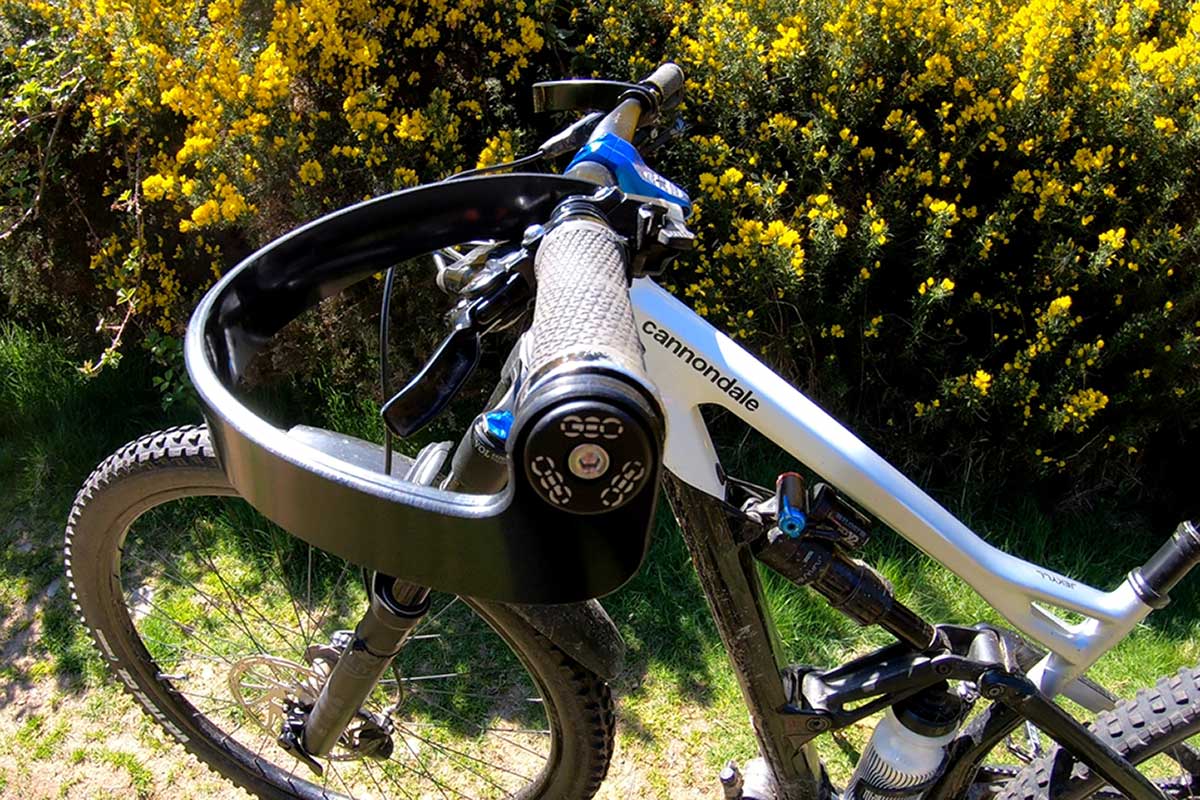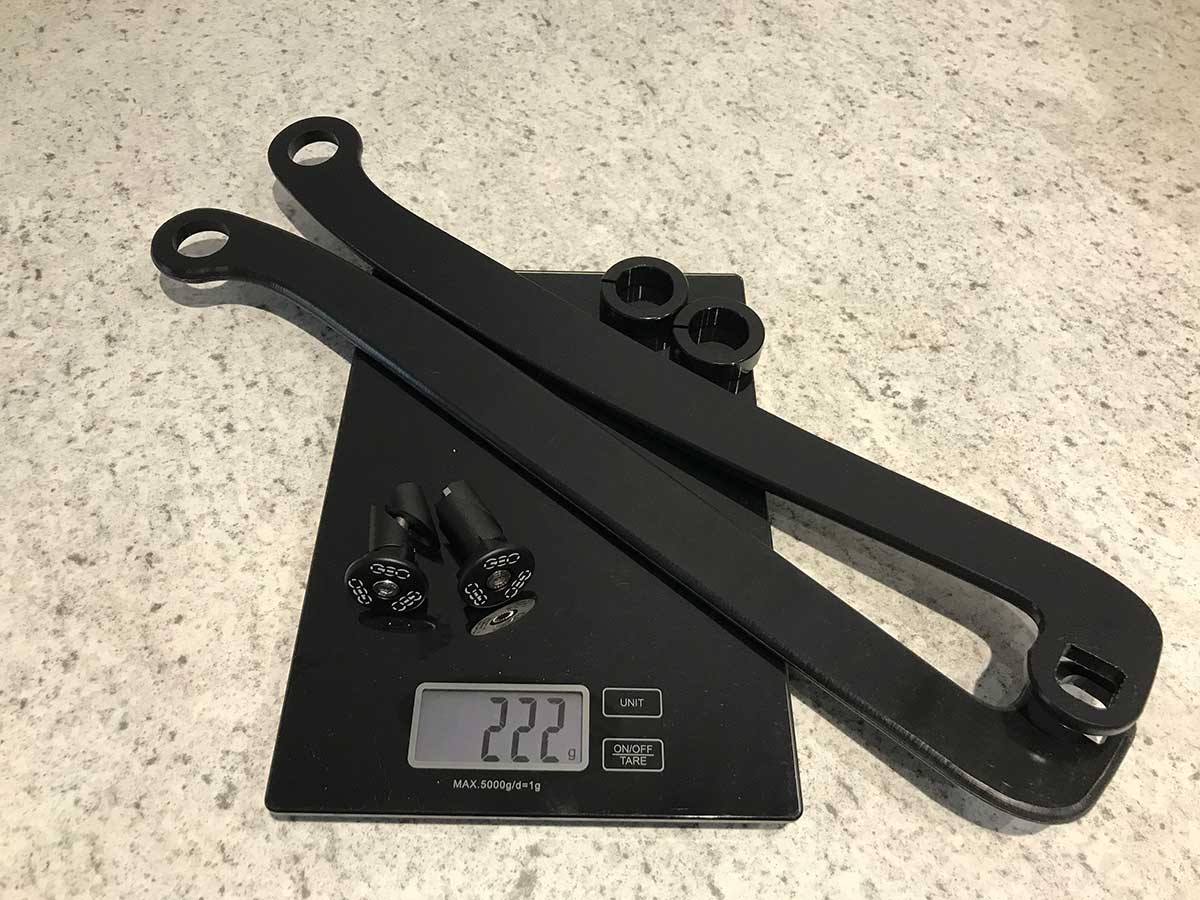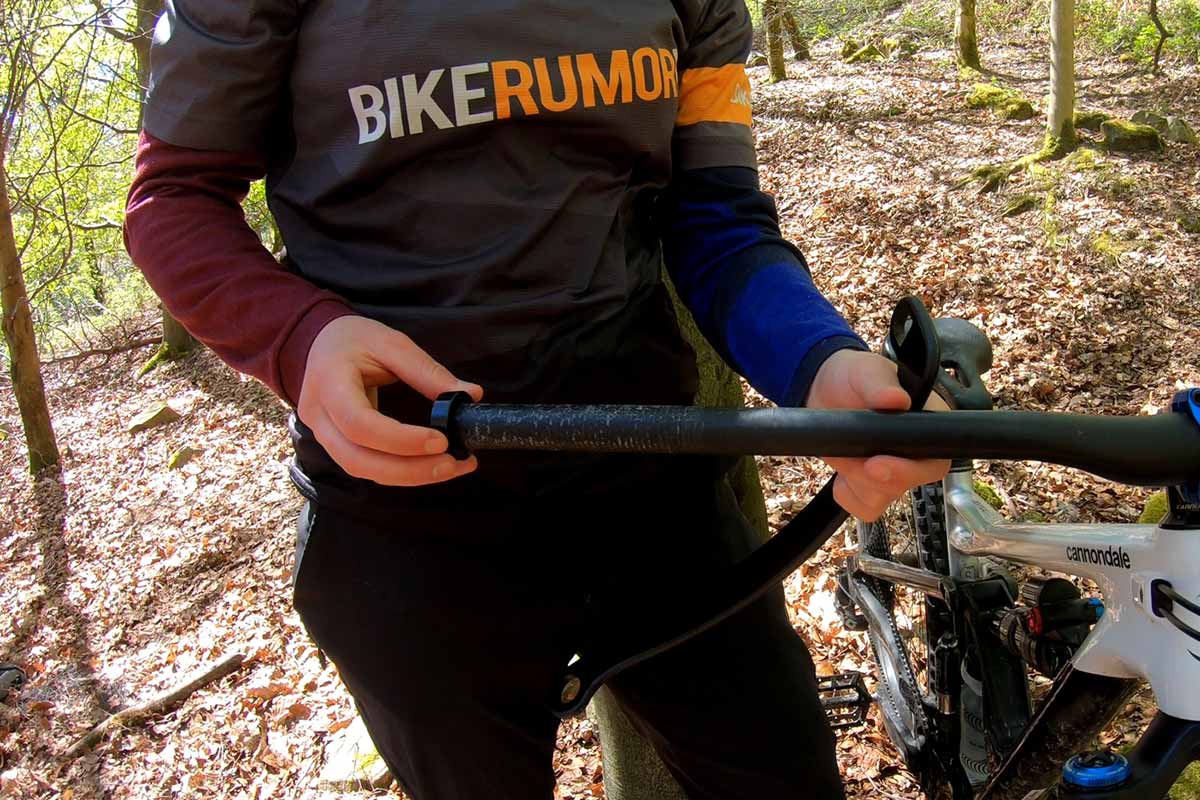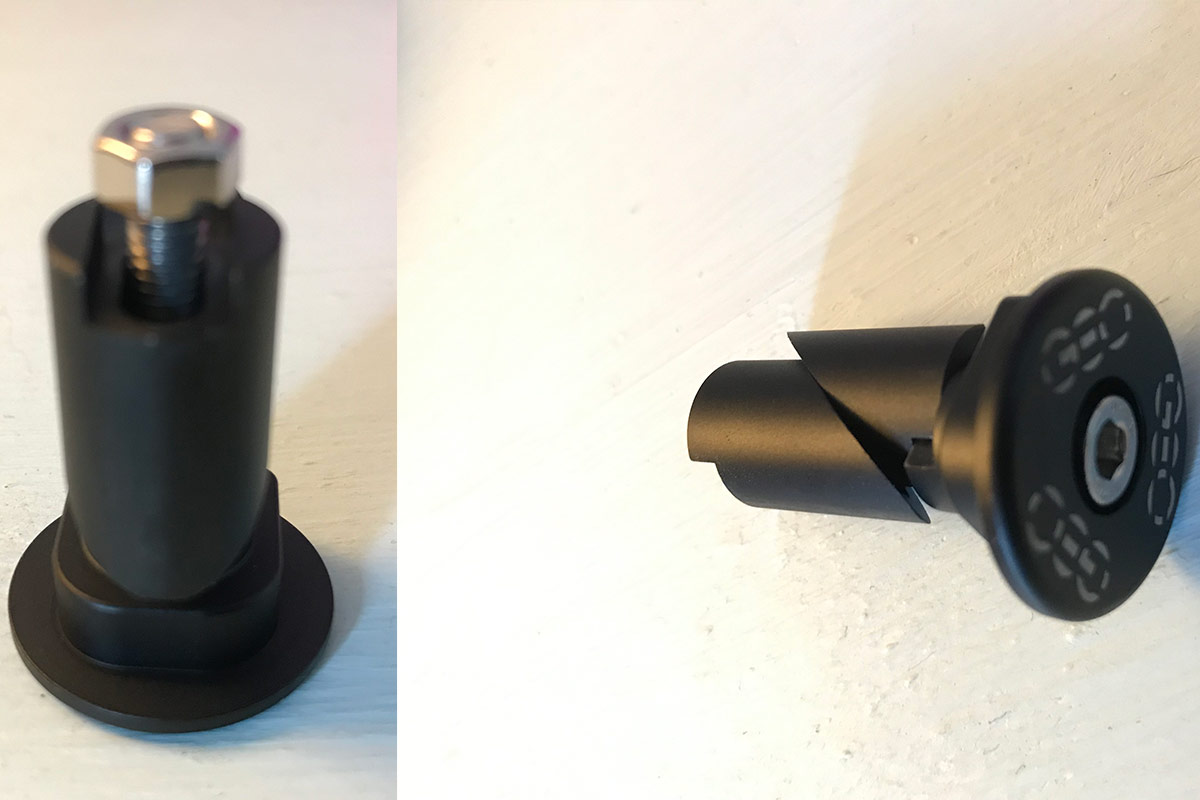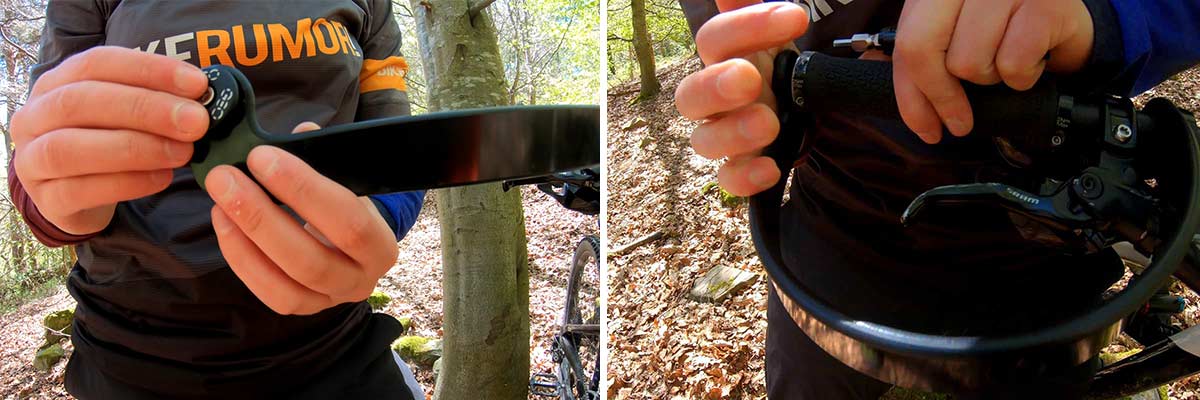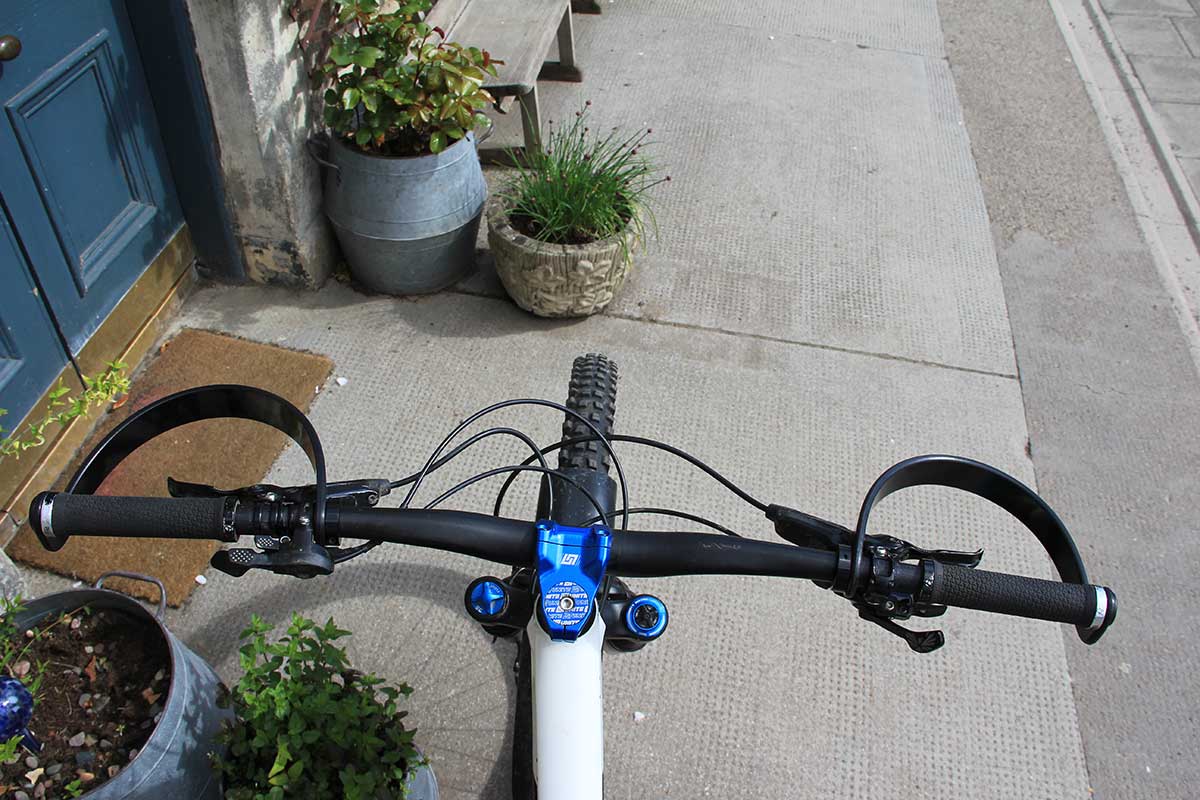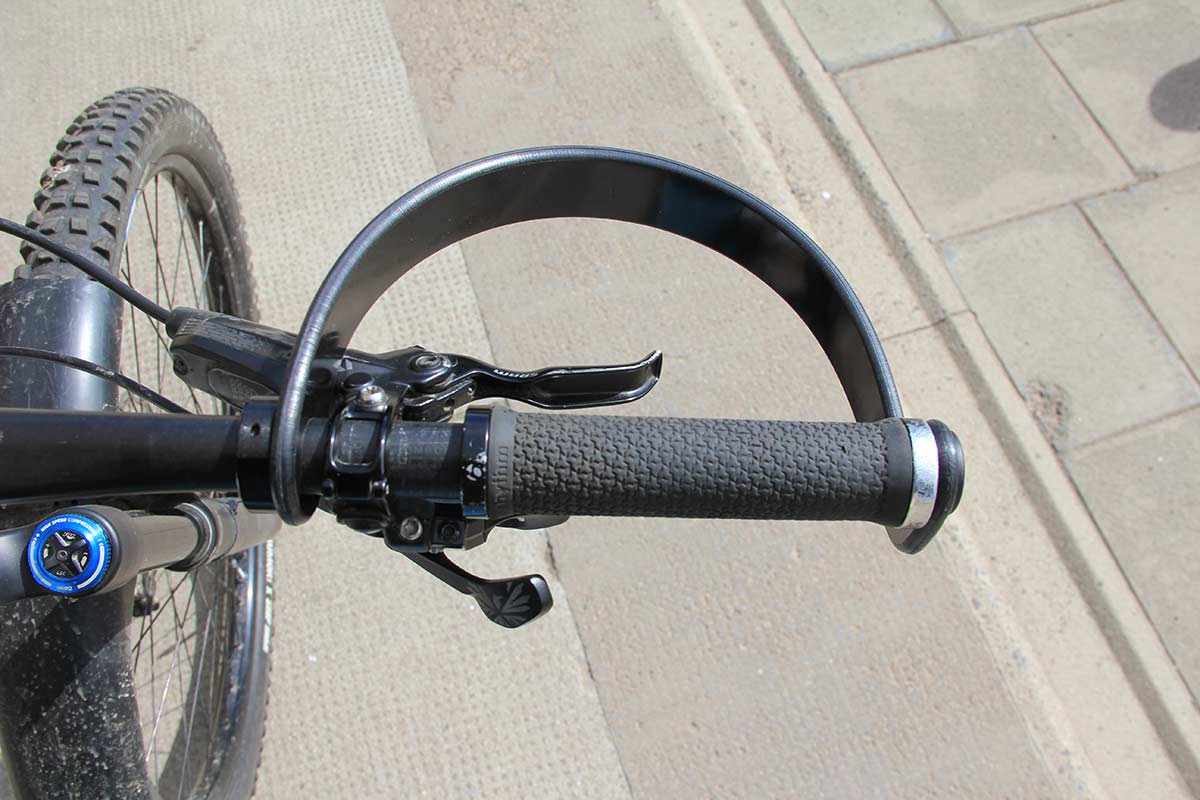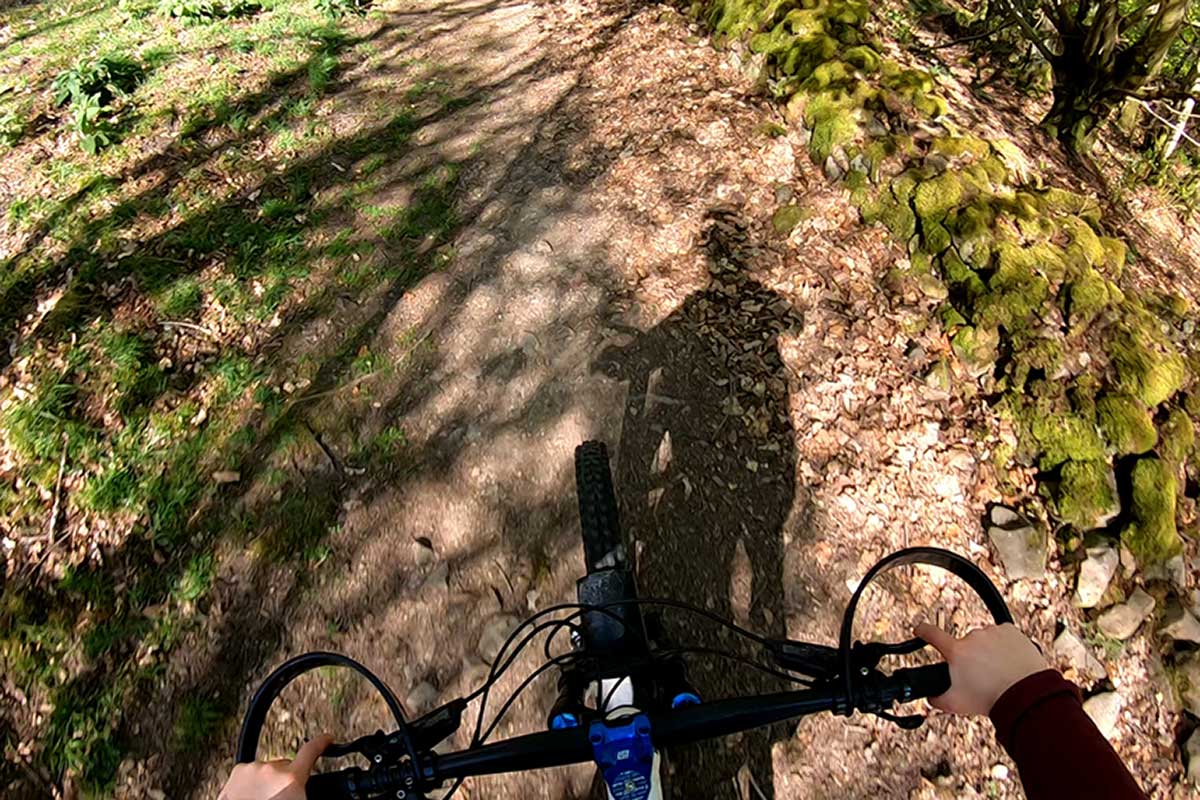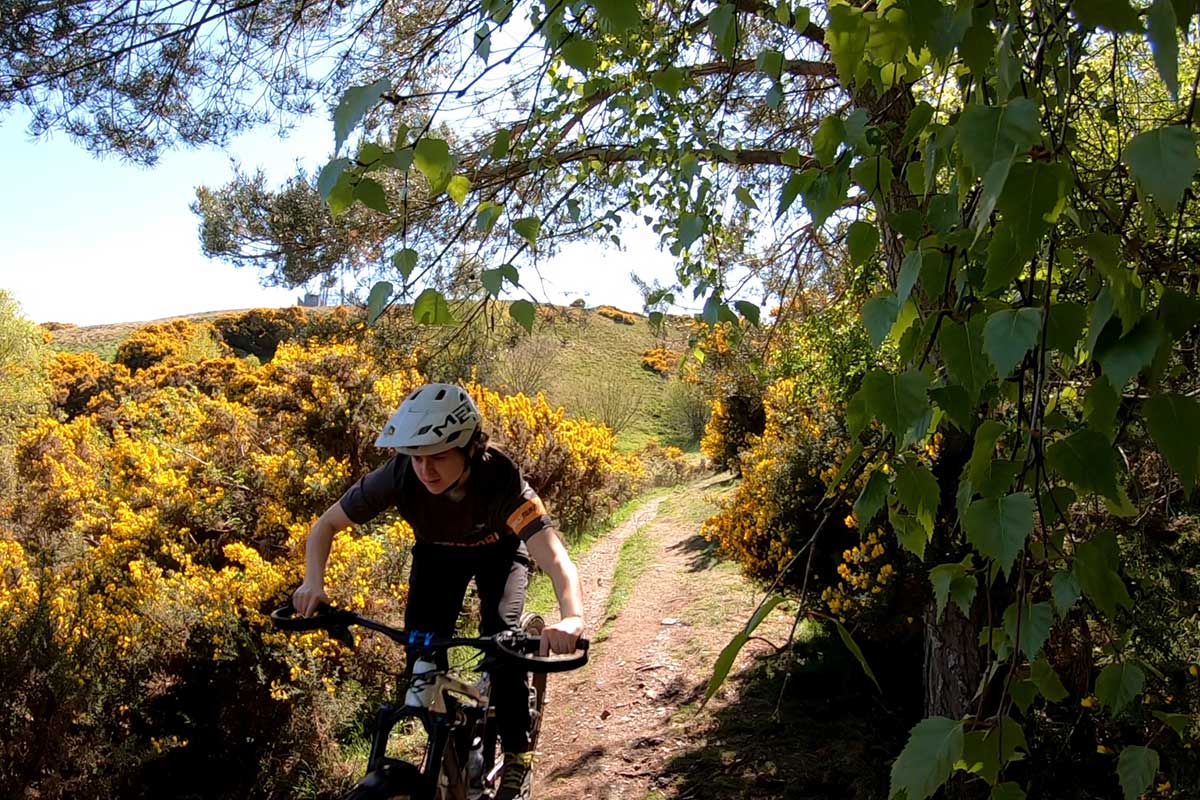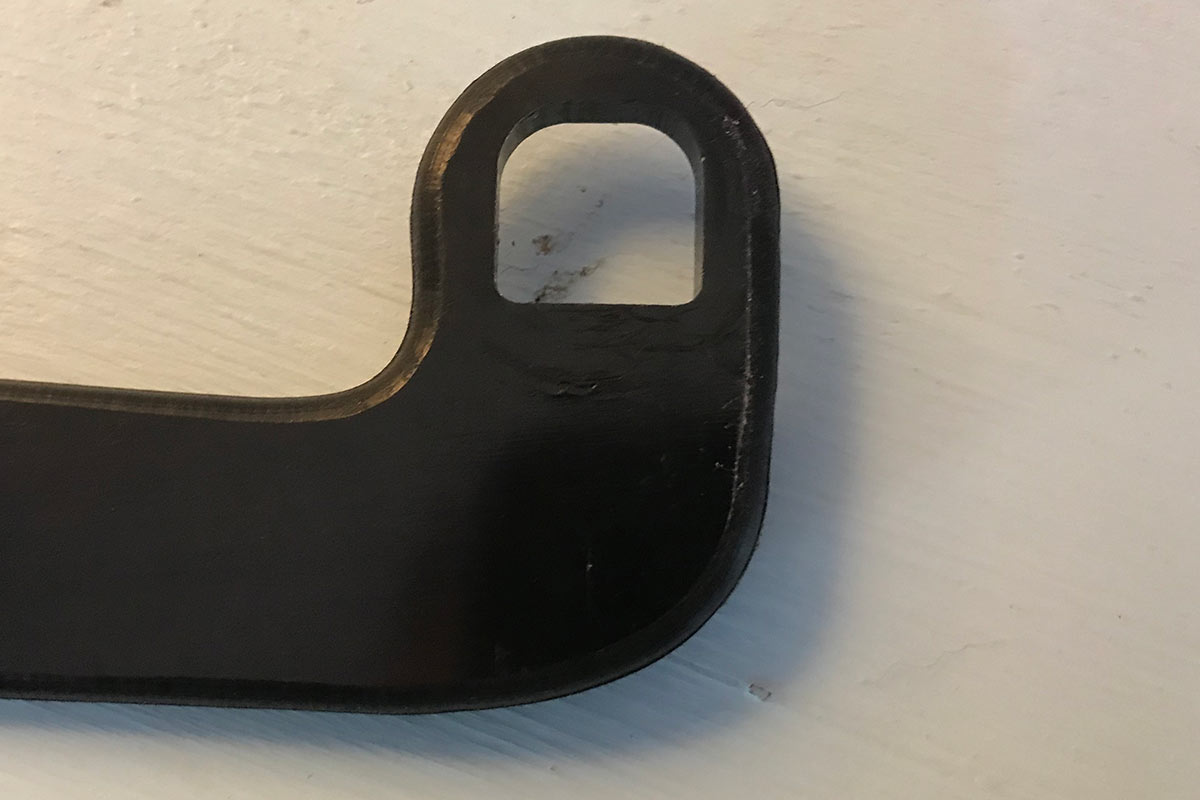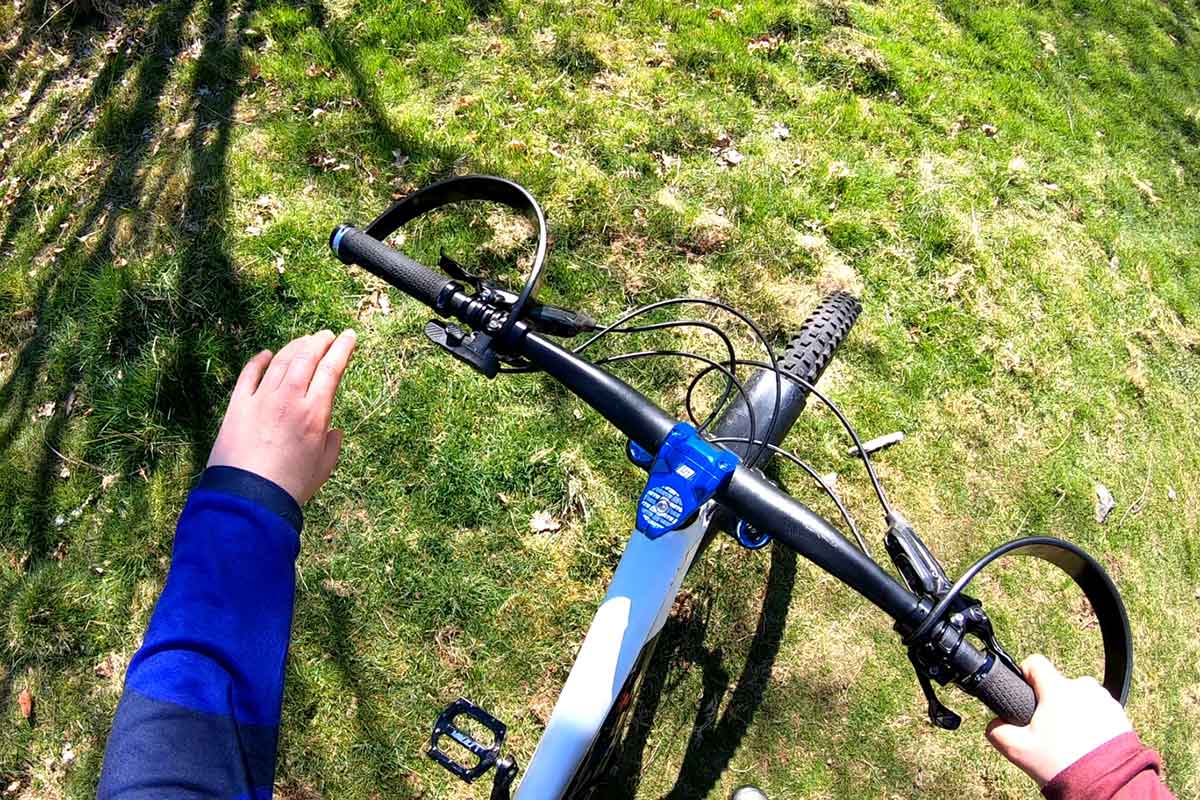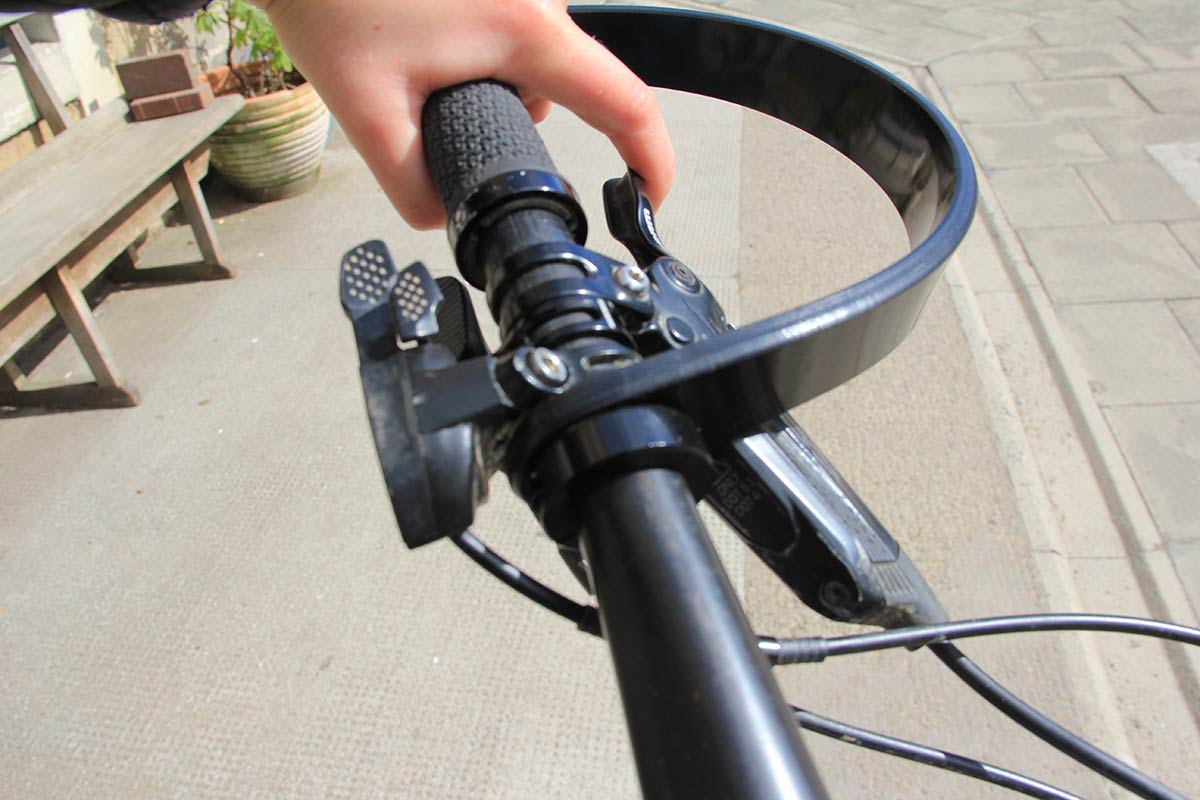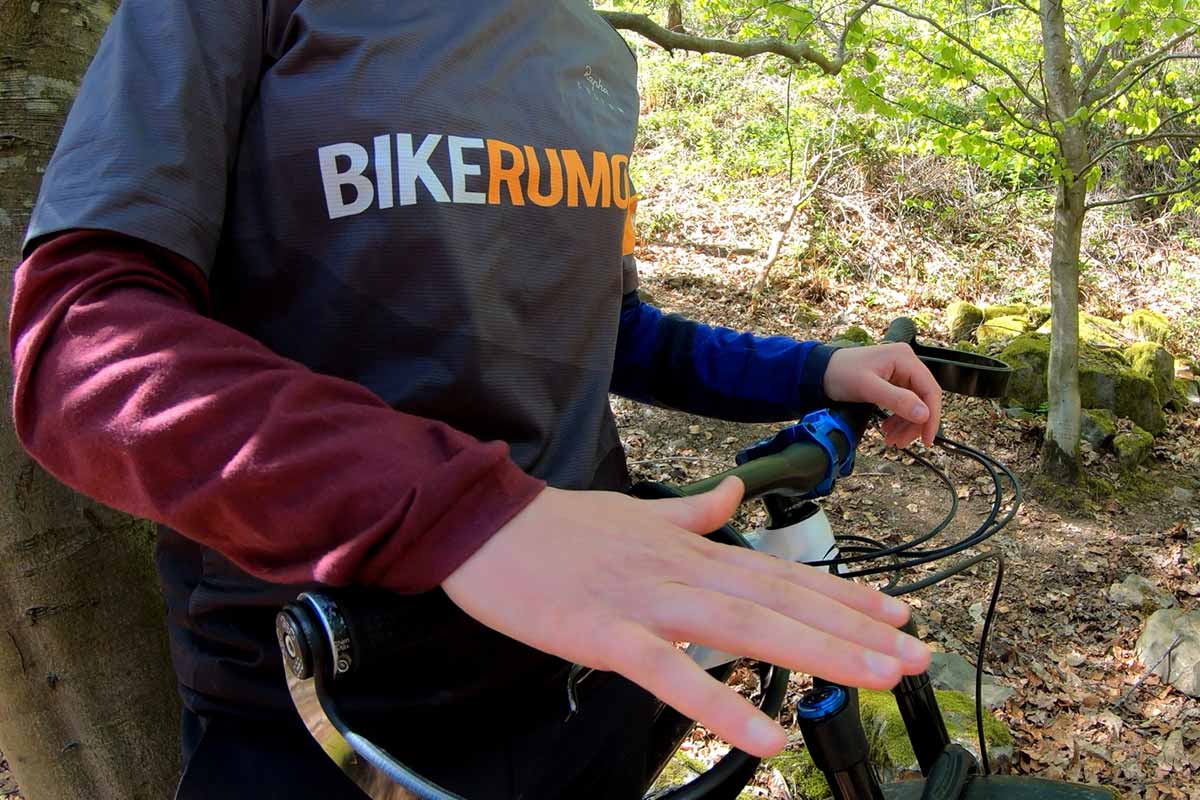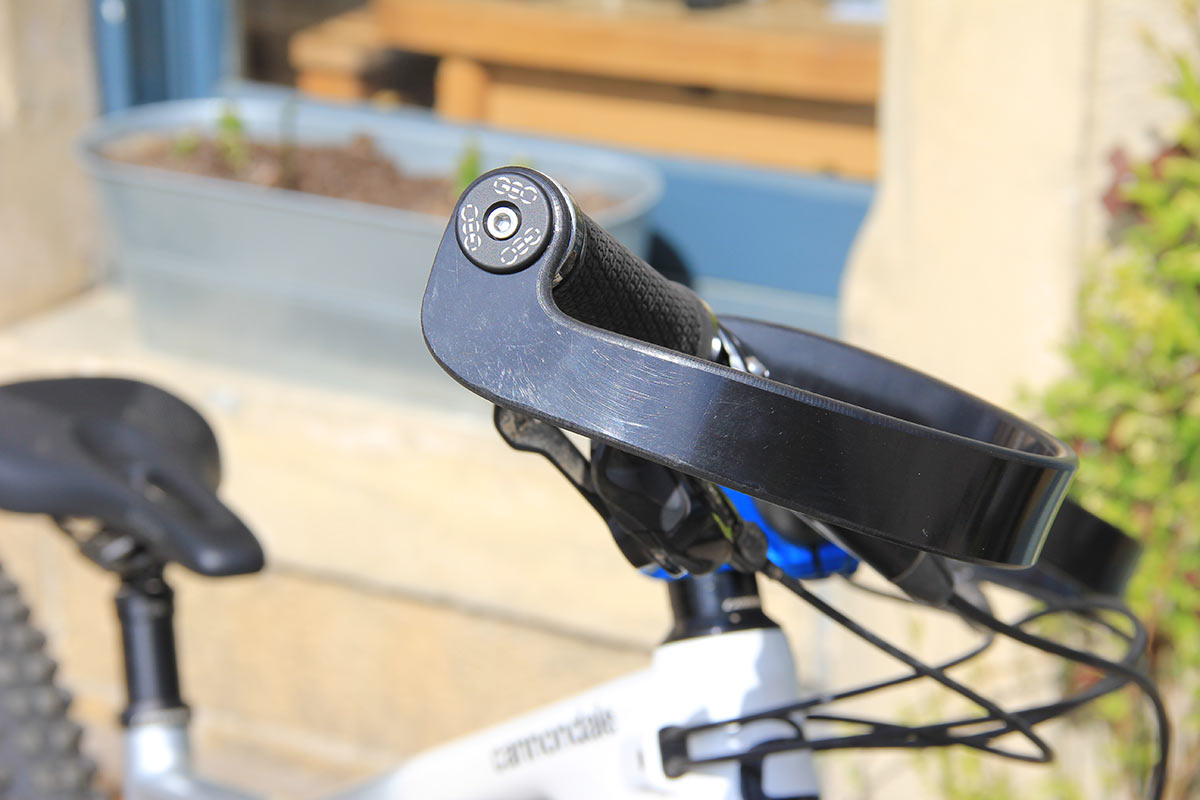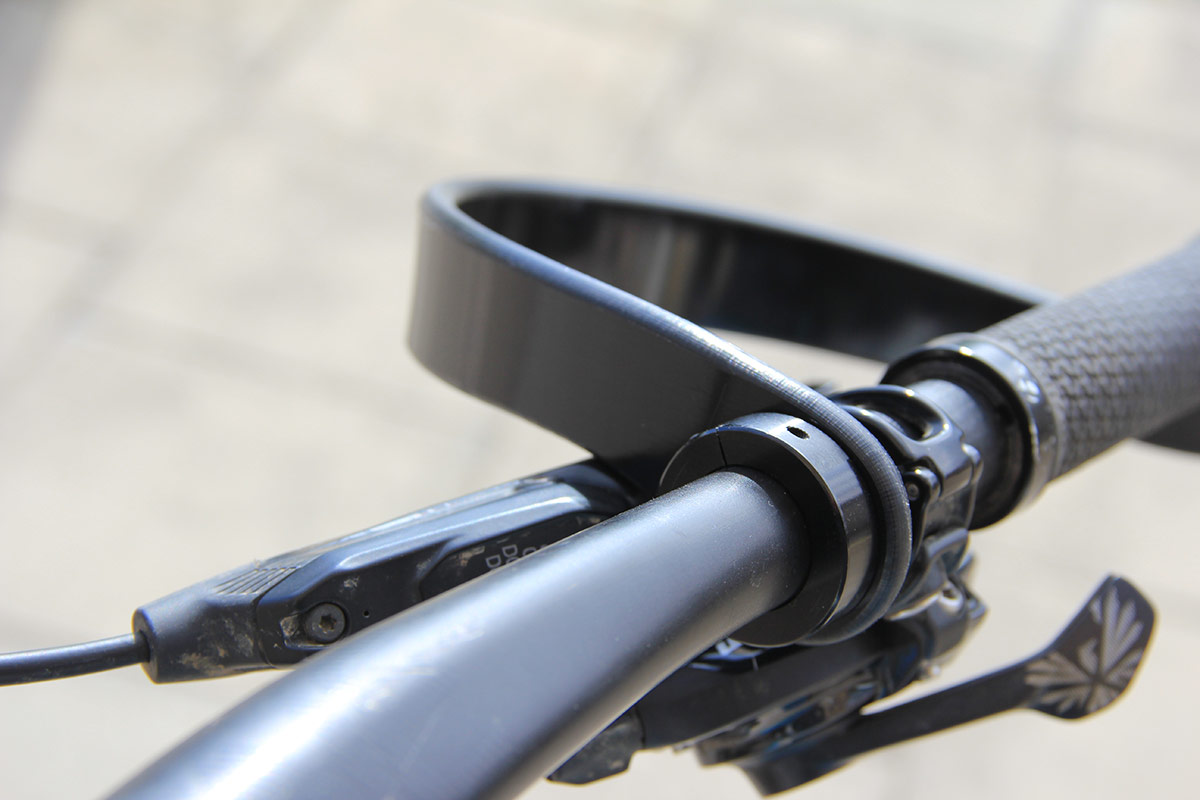GEO Handguards are the so-called helmet for your hands. Unlike most MTB handguards, GEOs loop right the way around the handlebar grip, from a shaft collar at the inside, to the bar end. A bit like Cycra Racing dirt bike guards, except they are made of a flexible plastic, not rigid aluminium.
Ever since founder Glenn E Olsen (GEO) crashed and suffered a serious hand injury in 2018, he and business partner Sean Colsen have been on a mission to create the most effective hand guards ever offered for mountain biking. We got a set in for testing to see if they live up to that claim…
GEO Handguards review
We already covered the full tech on GEO Handguards. Here we give you our impression of these MTB Handguards, including actual weights, installation, safety features and safety concerns, and of course, what it’s like to ride with them.
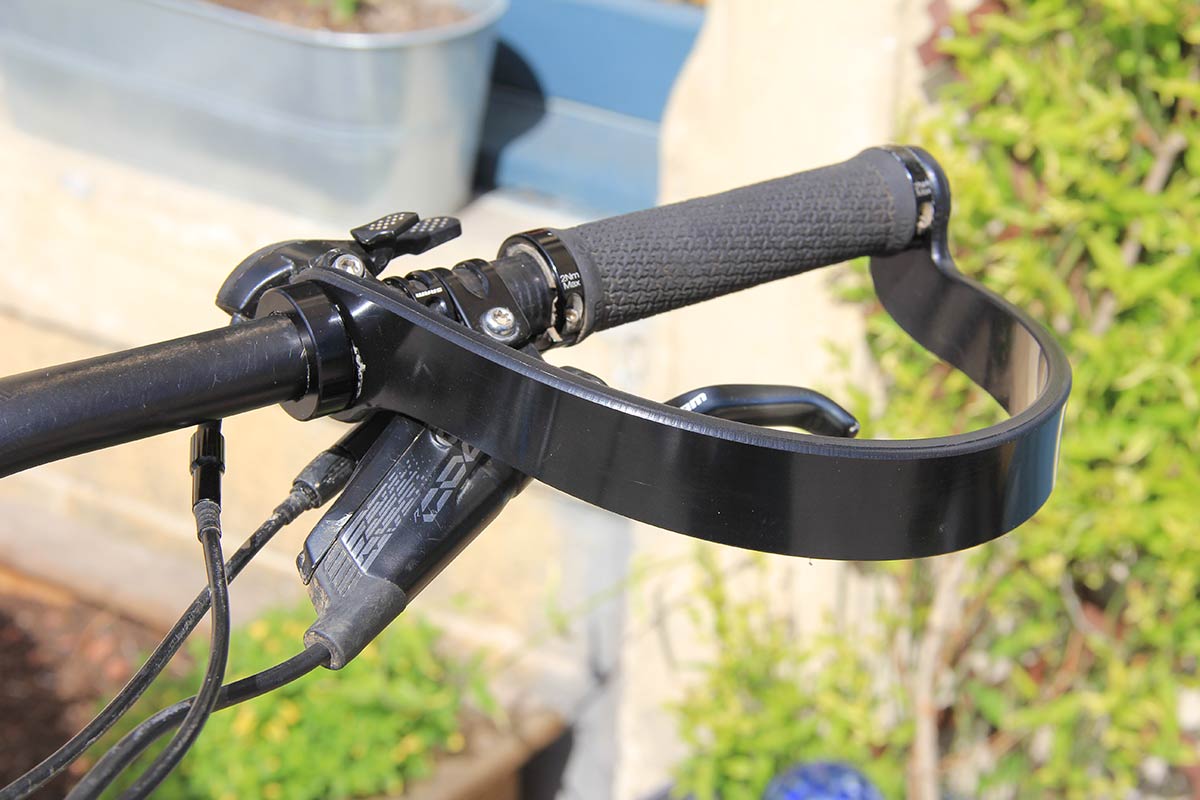
To be 100% honest, our first reaction to these handguards is “Wow, they are not pretty”. But this is safety we’re talking about. Surely it should come first, right?
After a few altercations with trees in the past, I’m not averse to giving the concept of handguards a shot. It’s relatively easy to break a finger when you smash the bar off a tree. And let’s be honest, these are better looking than few weeks off the bike because of an injury.
With an actual weight of 222g, a set of GEO Handguards is heavier than others on the market, such as those from Mr Wolf. But again, if safety is higher on your list of priorities than weight or looks, these offer much sturdier protection.
Installation of GEO Handguards
Installation doesn’t require any special tools, just standard hex wrenches. However, unlike other handguards we see on the market, they do require you to remove your grips and controls. This is the most lengthy part of the process – installing the handguard itself is quick, easy and intuitive. GEO send a handy installation card in the box, and they have an installation video on their website.
Once you’ve removed your controls, slide on the shaft collar to around 7.5 to 8 inches from the end of the bar, and tighten it up. You then simply slide the circular end of the guard onto the bar until it meets the shaft collar, then reinstall your controls. If the guard is a bit tight on your bar, you can heat it in some warm water to allow it to expand slightly. That said, I had no problems sliding it onto my OneUp carbon bar.
Next comes the expansion plug. This inserts into the opposite end of the guard with a satisfying click. You then bend the guard around to the bar end, push the expansion plug into the bar end and tighten.
Tip: Don’t fully tighten the expansion plug at this stage. You want to still be able to adjust the angle as you fiddle with the position of your controls. Once you’re happy with that, give the bolt a final quarter turn.
Set-up
Each handguard takes up 17mm of space on the bar. I’ve already got a pretty crowded cockpit set-up on the left-hand side, with a dropper remote and a shock lockout remote as well as the brake lever. The handguard needs to amount at exactly the position that I would normally run the shock lockout remote.
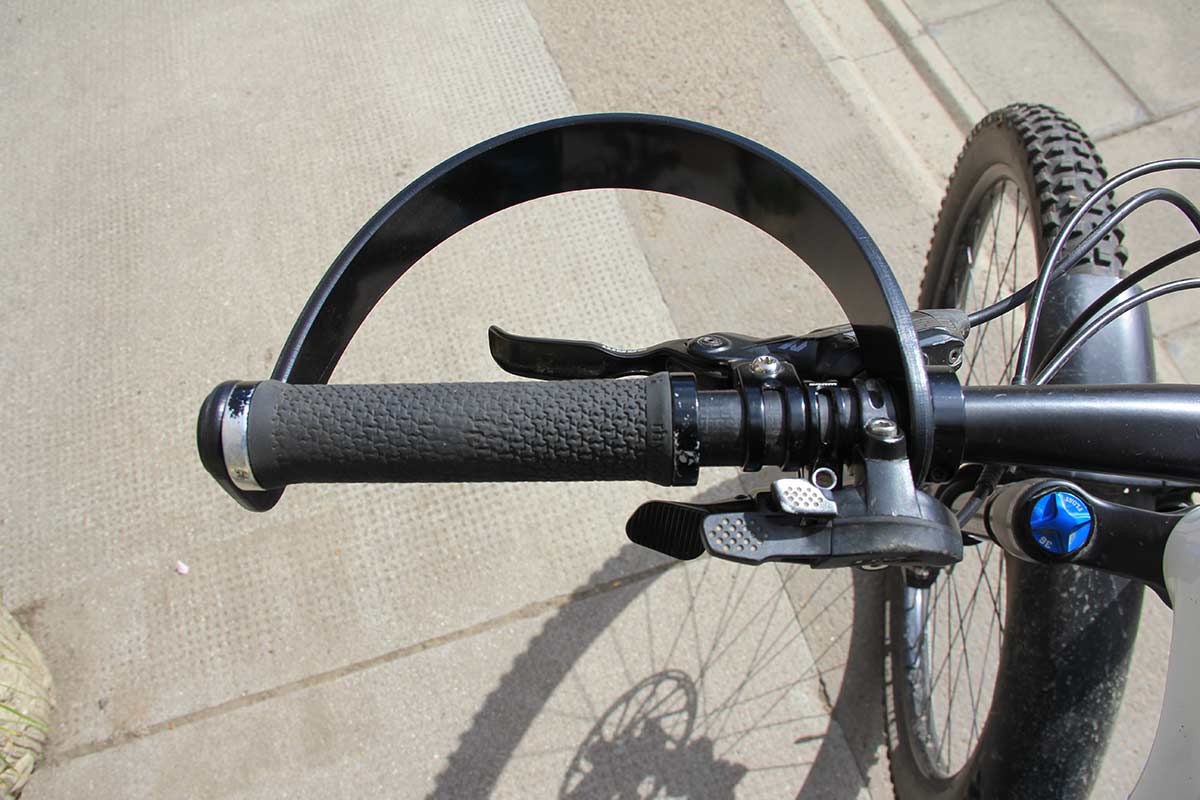
Normally the position of the shaft collar can be a little flexible in the 7.5″ to 8″ range. In this case, the bar I run actually starts to ovalise at around this point, limiting the space available for control mounts. As a result, on this side I’ve had to compromise on the position of the dropper remote and the shock lockout remote, squashing them up closer to the grip.
I appreciate that a lot of riders will run wider bars than this, and most won’t have the extra shock lockout remote to complicate matters. On the right-hand side, I just have a brake lever and shifter so there’s a lot more space for the handguard mount and the set-up looks a lot cleaner.
The guard is designed to be installed such that it is angled downwards slightly. This is to reduce risk of injury if you take a trip over the handlebars. We’ll get to that later…
You’ll likely find that your brake lever position will determine how steep you can run the guard. On my set-up, the guard contacts the big master cylinder of my SRAM Code R brakes. This is fine for me as I run my brake levers angled down slightly. If you prefer to run your levers flat however, you may have trouble positioning the handguard correctly.
Riding with GEO Handguards
Do they get in the way of your view? No, not at all. You’ll be aware of them in your peripheral vision but, unless you’re looking straight down at your front wheel (which, pro tip, don’t) you won’t notice them at all. I should say that, in the GoPro footage in the review video, I angled the helmet-mounted GoPro downwards just to show what the cockpit looks like.
GEO Handguards would definitely protect your hands, and controls to some degree, in the event of a crash. I often clip the odd trailside tree on descents, even with relatively narrow bars – the trails around here can be very narrow. They’ll also keep nasty trailside foliage away from your knuckles to some extent, though the steeper you angle them, the more exposed you’ll be to gorse and other prickly bushes.
These MTB Handguards have some flex engineered into the polymer. They aren’t brittle so won’t crack when you hit a tree at pace. Rather, I imagine they would absorb some of the impact, deflecting the bar away from the tree. It will knock you off line of course, but it might save you a broken finger and an unpleasant trip to the emergency room.
GEO Handguard Engineering
Sean describes the polymer of the guard as “like bubblegum”. He and GEO began prototyping the guards with a super strong, resilient polymer that is used for signage on airport runways, designed to be strong enough to withstand the force produced by a jet engine, or falling ice from aeroplane wings.
The final version of the GEO Handguard, the one you can now buy, is a modified version of that plastic. It is mostly polyethylene, the supposed “steel of the plastics industry”. In testing, the final polymer could not complete a fracture “notch” test because it simply would not break.
This means that under force, the 6mm weak point at the bar end will not fracture, shatter or crack. Instead, it will stretch a little, and actually rotate downwards allowing a hypothetical trapped hand to escape the guard during a crash. Sean, who also happens to be a doctor of bone medicine, says that the guard will bend long before a wrist would snap. More on that in a sec…
Safety concern, or am I imagining it?
It would be wrong of me not to mention the major concern I have about the safety of these MTB handguards.
As the guard loops all the way around your hand, would it be possible for your hand to get trapped inside the guard in the event of a crash? Having ridden with these I think the chances are pretty slim, especially with the guard angled downwards slightly. But, I don’t think it’s an impossibility. The guys at GEO say this has never happened to them or to any of their test riders.
I’m going to play devil’s advocate for a minute, just for completeness. Imagine a classic Over-The-Bars crash, like when you catch a pedal on a stump or rock, and the bike stops dead, but you get thrown forwards. It would be possible for your hands to slip forwards off the grips and get caught between the bar and the guard.
This could be a pretty uncomfortable experience. Worst case scenario, I think there’s a possibility you could tumble in just the right way, and with enough forward force, to break your wrist. To be clear, this has not happened to us. It’s just something we’ve observed could happen, given the right circumstances.
Sean and Glenn at GEO say that, installed properly, the scenario I’ve just described can’t happen as your hands should slide away from the guards in the event of a crash. And to be honest, I think 999 times out of a 1000, that would be the outcome.
GEO’s response to the OTB scenario
UPDATE: Since this review went live, we’ve traded a few emails regarding the OTB situation. The guys at GEO have engineered a “safety net” into the guard, for that one time you do trap your hand in the guard. The bar-end attachment point and the flexible nature of the polymer allows the guard to flex downwards under force. Thus, if you were to trap your hand, it should flex and allow your hand to escape during a crash.
Sean provided the following statement, and made the video above to show how easily they flex in a downward motion while still providing frontal impact protection.
“I went to our fabrication shop in order to quantify this a little better. We have a set of guards mounted on display bars. Using a tension gauge, I measured the force it takes to deflect the guard downwards. It started deforming at 45 pounds and rotated completely out of the way at 75 pounds. This is far less than the force required to fracture a wrist. (ie I am 190lbs and my wrists don’t fracture doing push-ups or pull ups, hammering metal or riding a bike.)”
“When we were developing these we tried 8 different plastic compounds, in 3 different thicknesses. We are on the 3rd generation of mounting hardware – all the components are of our own design. We did this at great expense in order to produce the best possible product. What we developed is a “compliant” structure – very strong in one direction, but very compliant in another.”
“Both Glenn and I work with our hands – He is a painter and an artist – a rather amazing one at that. I am a doctor in a surgical specialty and I spend my free time fabricating a vintage style car that I designed. Like most people, we use our hands all day, every day. Glenn suffered a serious hand injury 2 years ago which is what spawned this project. It affects him every single day and most likely would have been less severe if he was riding with GEO Handguards. We want riders everywhere to know that this is a great product, which is properly designed and engineered, not just some off the shelf parts thrown together.”
Ultimately, it’s up to you, the readers, to balance the safety/risk equation here. If you’re someone who rides steep, gnarly, technical terrain, no stranger to the occasional OTB, I would warn you off using these guards. My perception, and it is just mine, is that the risk of trapping a hand in the guard outweighs the risk posed by bashing off a tree every once in a while.
On the other hand, if you take fewer risks while riding, and tend not to dismount via the front door too often, you might want to consider these MTB handguards. Especially if your local trails are very overgrown, and perhaps don’t see the maintenance, love and attention they deserve.
The GEO Handguards could save your hands from the odd tree, or particularly vicious trailside foliage that wants to tear the skin off your fingers. A thick pair of gloves would also protect you from the latter, mind.
Founders Glenn and Sean are of the opinion that handguards will soon become a regular component of bikes. A new industry standard, much like the helmet, which itself took time to gain popularity throughout the ’80s.
Pricing & Availability
A set of GEO Handguards retails at US $75 with free shipping. Get them direct via their website.
